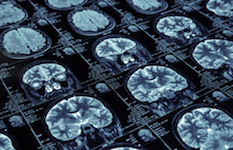Computational Imaging Group (CIG) pursues research on the development of advanced algorithms and mathematical foundations for computational imaging, computer vision, and image processing. Topics of interest include the acquisition, reconstruction, and analysis of imaging data. Research effort is taking place at two complementary levels:
- Fundamental and mathematical aspects of imaging
- Application-oriented projects in collaboration with partners
Some of our recent research is summarized below. We also maintain a separate list of research projects for WashU students.
Deep Learning for Imaging and Vision

Imaging data exhibits intricate relationships, spatiotemporal dependencies, and nontrivial features. However, finding automatic ways to exploiting such dependencies in practice is difficult. CIG specializes in the development of mathematically rigorous methods integrating state-of-the-art deep learning into scalable imaging algorithms with provable guarantees.
Medical Imaging

CIG collaborates with researchers at Washington University School of Medicine on imaging algorithms for enabling better and early diagnosis, and increasing patient comfort. Some of our most exciting projects are in the area of magnetic resonance imaging (MRI), where our ultimate goal is be able to efficiently process large-datasets for detecting information useful to healthcare professionals.
Computational Photography

Can we form images of poorly lit objects? Poor quality images are inevitable due to practical hardware and acquisition constraints. CIG develops technology for the restoration of lost information using advanced machine learning algorithms. Our research considers the complete imaging pipeline from sensing all the way to analysis to guide the design of computational photography technology.
Computational Microscopy

Much of modern biomedical imaging is based on linear models that assume that photons travel following a straight path. This makes corresponding imaging methods inaccurate for many applications by placing fundamental limits—in terms of resolution, penetration, and quality. Our goal is to build methods for imaging under nonlinear scattering scenarios.